Understanding the BJJ Tarantula Guard
The BJJ Tarantula Guard is a dynamic and highly effective guard position in Brazilian Jiu-Jitsu. Known for its ability to control distance, create submission opportunities, and set up sweeps, the Tarantula Guard can be a game-changer for practitioners of all levels. This guide will delve deep into the intricacies of the Tarantula Guard, exploring its origins, advantages, disadvantages, and, most importantly, five devastating attacks you can unleash on your opponents. Whether you’re a seasoned competitor or a beginner just starting your BJJ journey, understanding and mastering the Tarantula Guard will undoubtedly elevate your game.
What is the Tarantula Guard
The Tarantula Guard is a guard position where a BJJ player uses their legs to control their opponent’s arms, creating distance and setting up attacks. The primary grip involves using the feet to push on the opponent’s biceps or shoulders, effectively preventing them from passing the guard. This position allows the guard player to maintain a safe distance, control their opponent’s posture, and launch a variety of attacks, including submissions and sweeps. This guard is particularly effective against opponents who prefer to stand up or posture aggressively, making it a versatile tool in a BJJ practitioner’s arsenal. The key to a good Tarantula Guard is maintaining proper control and timing your attacks.
The Origins and Evolution

The exact origins of the Tarantula Guard are somewhat debated, but it has become a staple in modern BJJ. It likely evolved from other guard positions, such as the Spider Guard and the De La Riva Guard, with practitioners finding new ways to use their legs to control their opponents. Over time, the Tarantula Guard has been refined and adapted by numerous top BJJ athletes, who have developed various strategies, submissions, and sweeps from this position. Its evolution continues as practitioners discover new techniques and incorporate it into their overall game plans. The adaptability and versatility of the Tarantula Guard have cemented its place in the BJJ world.
Advantages and Disadvantages
The Tarantula Guard offers several advantages. It excels at controlling distance, disrupting the opponent’s base, and creating submission opportunities. It is also effective at preventing the opponent from passing the guard, giving the guard player time to set up their attacks. The Tarantula Guard can be used against various opponents, regardless of their size or style. However, the Tarantula Guard also has some disadvantages. It requires good flexibility and control. Moreover, a skilled opponent can sometimes pass the guard by effectively managing their posture and using specific passing techniques. It’s essential to be aware of these drawbacks to maximize its effectiveness and avoid getting passed. Proper training and conditioning are crucial to overcoming these challenges.
5 Deadly Attacks From Tarantula Guard
Attack 1 Knee Bar
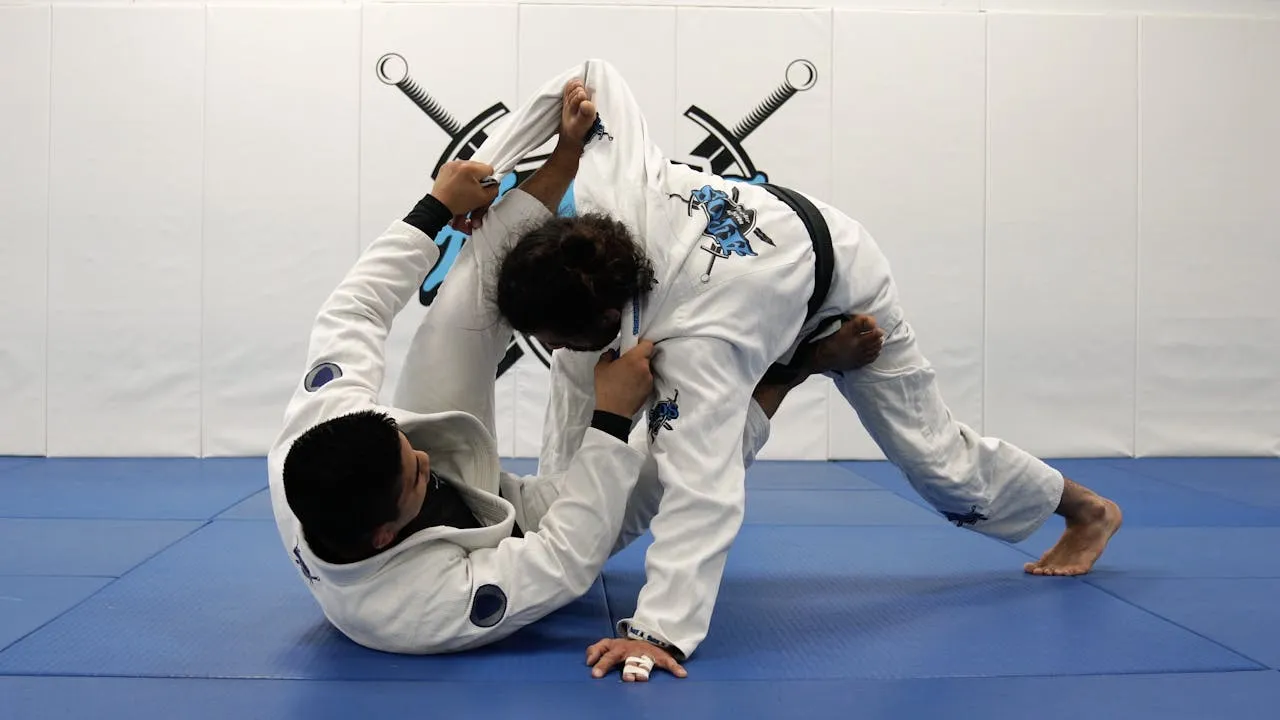
The Knee Bar is a powerful submission that can be applied from the Tarantula Guard. This attack targets the knee joint, and, if executed correctly, can force an opponent to tap quickly. The setup involves controlling the opponent’s arm and then using your legs to manipulate their leg into the correct position for the submission. The key to a successful Knee Bar from the Tarantula Guard is timing and precise execution. It’s a high-percentage submission that can quickly end a match.
Setup for the Knee Bar
From the Tarantula Guard, control one of your opponent’s arms with your hand, pulling it towards you. This will make them vulnerable to a Knee Bar on the opposite side. Use your foot to push the same side leg of your opponent, creating space. Simultaneously, use your other leg to secure a grip on their other arm and control their posture. This dual control is essential for setting up the Knee Bar.
Executing the Knee Bar
Once the setup is complete, carefully bring the trapped leg across your body, angling the knee towards your chest. Position your other leg to control their hip, preventing them from escaping. Use your hands to secure the knee joint, and apply pressure by straightening your legs. This will hyperextend the knee, forcing your opponent to tap. Remember to apply the submission with control and be prepared to release if the opponent is injured or you feel any unexpected resistance.
Attack 2 Straight Ankle Lock
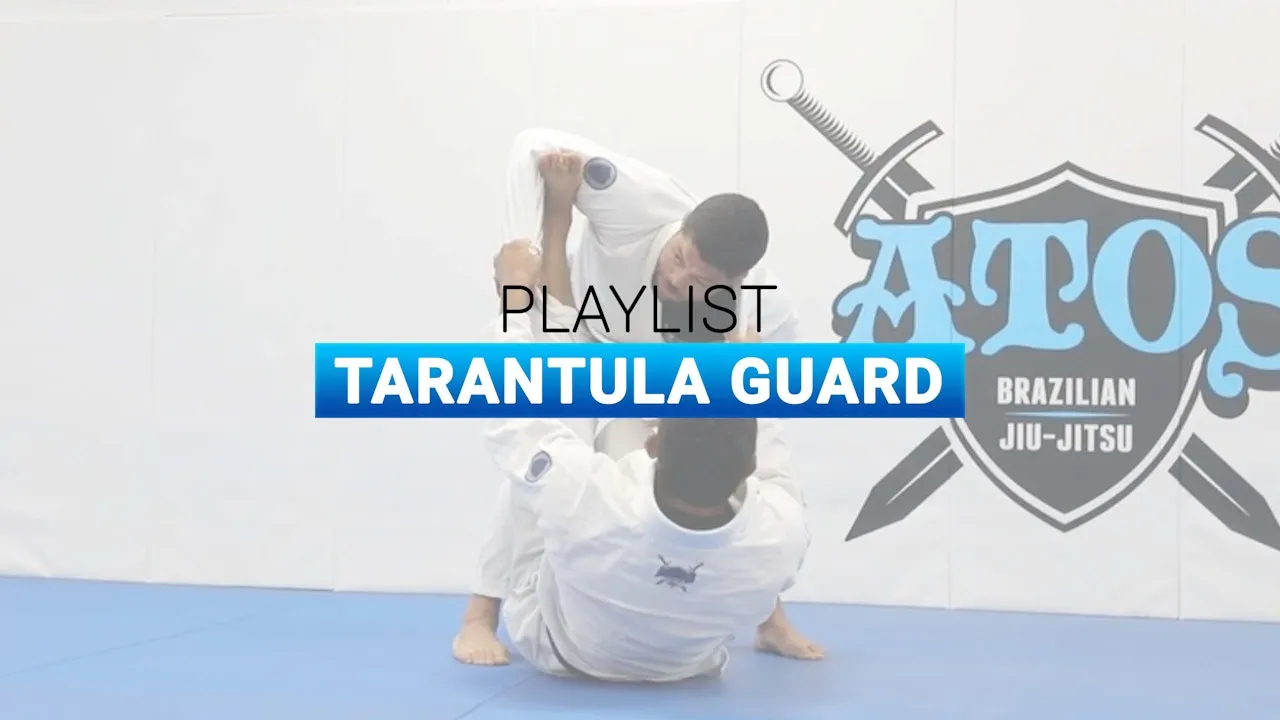
The Straight Ankle Lock is another effective submission that can be set up from the Tarantula Guard. This attack targets the ankle joint. It’s a quick and direct submission that can catch opponents off guard. The Straight Ankle Lock relies on controlling the opponent’s foot and applying pressure to the ankle, causing significant discomfort and forcing a tap. Mastering this technique requires precise grip and a strong understanding of foot positioning.
Setup for the Straight Ankle Lock
From the Tarantula Guard, control your opponent’s arm with your hand, preventing them from posturing. Use your foot to control the same side leg of your opponent, creating space. Simultaneously, use your other leg to secure a grip on their other arm, maintaining posture control. This dual control creates the right conditions to access the foot for the Ankle Lock.
Executing the Straight Ankle Lock
Once the setup is complete, reach for the opponent’s ankle, grabbing it with your hands. Secure a strong grip, ensuring that your hands are interlocked around the ankle. Position your body in line with the opponent’s foot, then apply pressure by leaning back and extending your legs. This will apply significant pressure to the ankle joint, leading to a tap. Remember to apply the submission with control and respect.
Attack 3 Omoplata
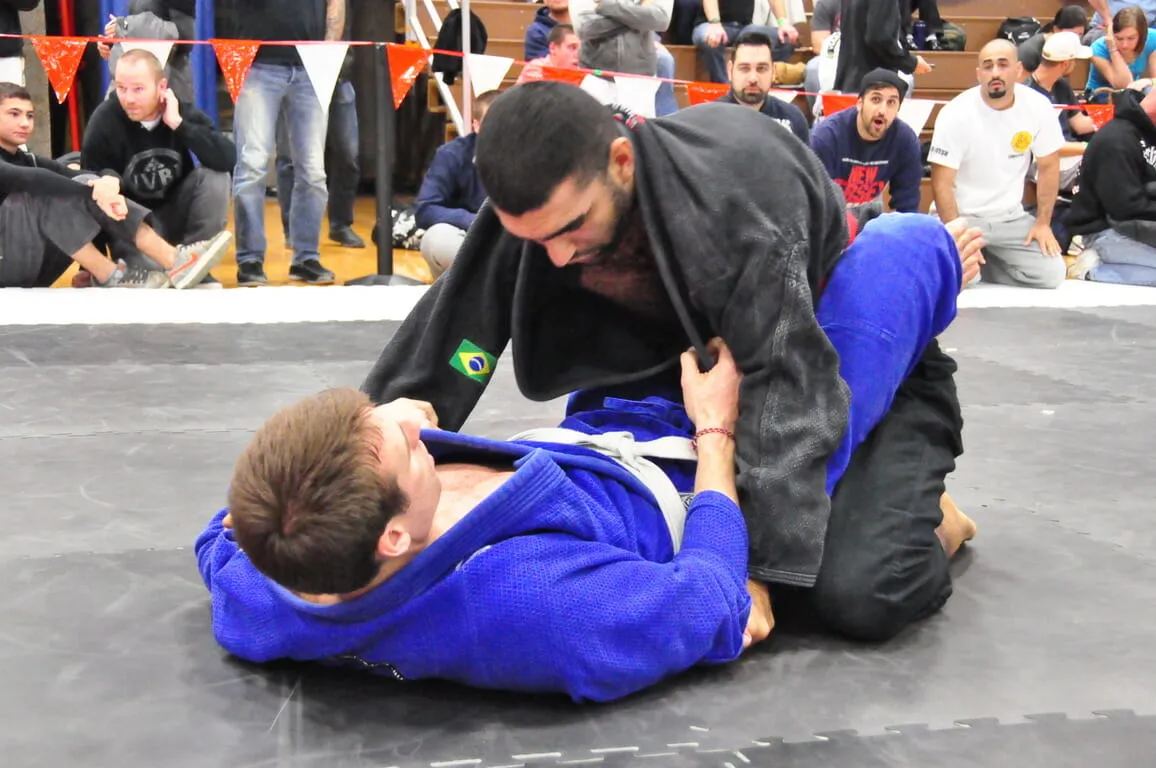
The Omoplata is a powerful shoulder lock submission that can be set up from the Tarantula Guard. This attack involves trapping the opponent’s arm and applying pressure to the shoulder joint, causing significant pain. It’s a highly versatile submission that can be used to control and submit opponents. Success with the Omoplata relies on proper positioning, grip control, and precise execution.
Setup for the Omoplata
From the Tarantula Guard, control one of your opponent’s arms with your legs. Secure a grip on the same side of the trapped arm. Use your foot on the other leg of your opponent to push their body away from you, creating space. This sets up the opportunity to transition to the Omoplata position.
Executing the Omoplata
Transition to the Omoplata position by swinging your leg over their shoulder, trapping their arm and securing your leg with your other arm. Secure the grip on the arm and your leg in place, then apply pressure by controlling their body and applying a lever with your legs and core. This submission can lead to a tap, or the opponent may roll, which can then be used for sweeps or further attacks. Remember to maintain control and prioritize proper technique.
Attack 4 Triangle Choke

The Triangle Choke is a versatile and effective choke from many BJJ positions, and the Tarantula Guard is no exception. The Triangle Choke involves trapping the opponent’s arm and head, and applying pressure with the legs. It’s a fundamental submission that can be very effective in high-level competition. This submission relies on precision and timing, but when executed properly, it can lead to a quick tap.
Setup for the Triangle Choke
From the Tarantula Guard, control one of your opponent’s arms to control their posture. As the opponent attempts to posture up, shift your body, aiming to bring your legs towards the head to secure the Triangle. Make sure you are pushing the opponent’s arm across your body. This position sets the trap for the Triangle Choke.
Executing the Triangle Choke
Once you are in position, secure the choke by bringing your legs together, trapping the opponent’s arm and neck. Secure the choke by pulling down on the head of your opponent. Squeeze your legs together tightly, creating pressure on the carotid arteries, and forcing the opponent to tap. Proper body positioning is essential to apply maximum pressure. Keep in mind that control and patience are key for a successful Triangle Choke.
Attack 5 Sweep to Mount
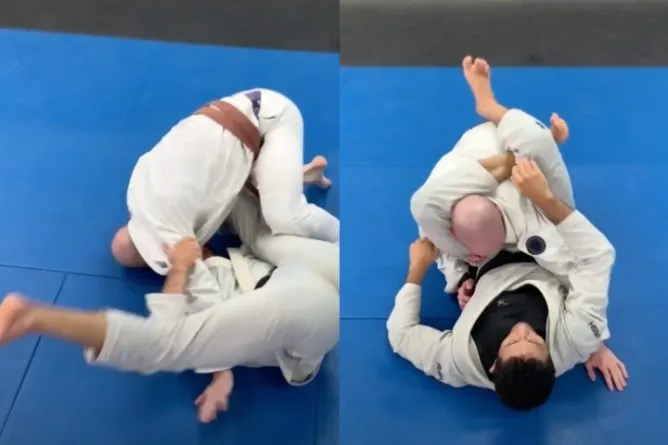
The Tarantula Guard isn’t just for submissions; it’s also a fantastic tool for sweeps. Sweeping from the Tarantula Guard can shift the momentum of the match, giving you a dominant position. The Sweep to Mount involves disrupting the opponent’s base and then using the legs to push them over, giving you top position. It can lead to various attack opportunities, including submissions and positional control.
Setup for Sweep to Mount
From the Tarantula Guard, control one of your opponent’s arms and keep the foot on the bicep. Use your free leg to make contact on the side of the hip of your opponent to create space. Shift your weight and push the leg to sweep the opponent over, aiming for mount position. The setup often involves using your legs to push on the opponent’s biceps or shoulders, disrupting their balance.
Executing the Sweep to Mount
As the opponent attempts to stabilize their base, use your legs to push them over. If done correctly, this will result in a sweep, bringing you to the top position, ideally, in the mount. Maintaining proper balance and timing your movements correctly is crucial for a successful sweep. Once you gain the mount, immediately work to establish control. This offers many additional opportunities for submissions and strikes.
Tips for Mastering the Tarantula Guard
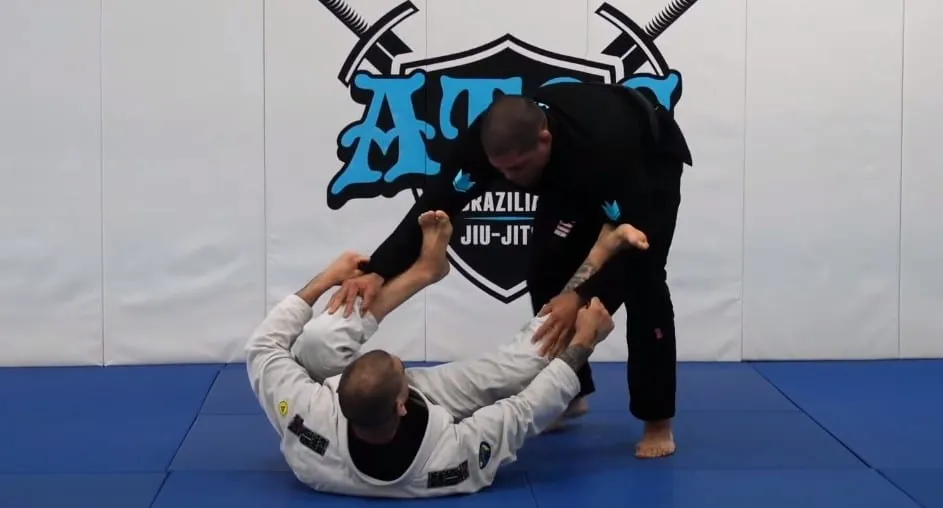
Grip Fighting and Control
Effective grip fighting and control are essential to mastering the Tarantula Guard. You must develop strong grips on the opponent’s arms, wrists, or gi to control their posture. Maintaining this control is critical to setting up and executing your attacks. Focus on using your legs to maintain distance and your hands to secure grips. Practice grip-breaking techniques to counter your opponent’s attempts to break your control. Strong grip fighting helps maintain the guard and open up submission opportunities.
Transitioning and Maintaining
Smooth transitions and maintenance are critical for the Tarantula Guard. You must be able to transition between the different attacks and sweeps seamlessly. This requires proper body positioning, timing, and the ability to anticipate your opponent’s reactions. Practice transitioning from the Tarantula Guard to various submissions and sweeps to improve your overall game. Maintaining the Tarantula Guard involves controlling the opponent’s posture and distance while preventing them from passing your guard.
Common Mistakes to Avoid
Several common mistakes can hinder your Tarantula Guard performance. Avoid over-extending your legs, which can make you vulnerable to leg attacks. Make sure not to let your opponent control your posture. Also, avoid neglecting your grip fighting. Ensure that you maintain control of their arms. A lack of grip control can open up gaps in your defense. Finally, avoid rushing your attacks. Take your time, set up your attacks properly, and wait for the right moment to strike.
Training Drills and Exercises
Drill 1 Grip Break Drill
A grip break drill helps enhance your grip fighting skills in the Tarantula Guard. Drill involves practicing how to break your opponent’s grips while maintaining control of their arms. This drill should be done with a partner, focusing on different grip variations. This will improve your ability to maintain the Tarantula Guard. This drill will strengthen your grips and your overall game.
Drill 2 Transition Drill
Transition drills will improve your ability to move between attacks. These drills will include moving from one submission to another while practicing in a sparring environment. Working to link these attacks together while maintaining control of your opponent is the goal here. Practicing transitions will help improve the fluidity of your game and make you more unpredictable.
Drill 3 Submission Drill
This drill focuses on executing submissions. You’ll work on specific submissions from the Tarantula Guard, focusing on technique and execution. Practicing this drill with a partner will refine your submissions and improve your ability to finish them effectively. This exercise is fundamental in honing your skills and preparing you for the real fight.
Conclusion
The BJJ Tarantula Guard is a powerful and versatile guard position that can significantly improve your BJJ game. By understanding the fundamentals, practicing the techniques, and avoiding common mistakes, you can master this guard and use it to control your opponents, set up submissions, and sweep to dominant positions. Remember to train consistently, and always prioritize proper technique over brute force. With dedication and practice, the Tarantula Guard can become one of your most effective tools in Brazilian Jiu-Jitsu. Embrace the spider, and let it transform your grappling game!
